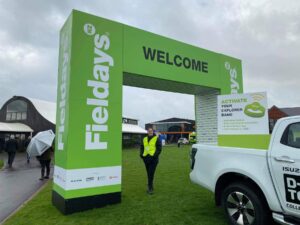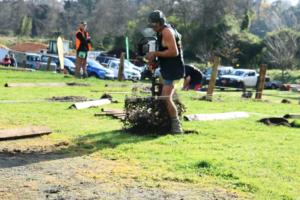Field on Fieldays – Day One
Veteran journalist Kingsley Field’s daily column on Fieldays
There were five of them, all clad in the proper safety gear – hard hats, hi-viz jackets, steel-cap boots, and several with heavy leather gloves, and each knew exactly what he was doing.
They were fast, efficient, and they worked as a team with the minimum of chat. There was just the occasional precise hand-signal, or a quiet word here and there, and in about 10 minutes flat they had the Wintec National Fieldays headquarters building for 2011 lifted off the back of a flat-bed truck and place neatly, level and square, on the appropriate site.
It was one of five such buildings brought to the Fieldays from the Tauranga head offices of Modcom Portable Buildings, who specialise in providing “instant accommodation” throughout the country.
Brendon Cole, sales manager for Modcom, says the building, which weighs three tonnes, is one of 200 variously-sized relocatable structures available for hire around New Zealand. The company, wholly New Zealand owned, has been in operation for the past 12 years, and is part of the Supermac Holdings Ltd organisation.
Elsewhere around the 40-hectare Mystery Creek National Fieldays site, work has been steadily building to a pitch over the past two weeks, and by late last week many of the more than 1000 exhibitors had their 1400 sites almost completed.
This, the 43rd annual National Fieldays event, looks set to again attract somewhere between 110,000 and 130,000 visitors, from around New Zealand and also from nearly 40 nations around the world.
Now recognised internationally as the biggest such agricultural show-piece event in the Southern Hemisphere, the four-day show sparks tens of millions of dollars in local, regional, national and international sales and business.
From massive pieces of farm machinery worth hundreds of thousands of dollars, to the latest styles in woollen socks, and from new forms of animal care to tried and true methods of food preparation – the National Fieldays provide a valuable focus for the nation’s rural communities, and a better understanding by urban dwellers of how those rural communities operate.




